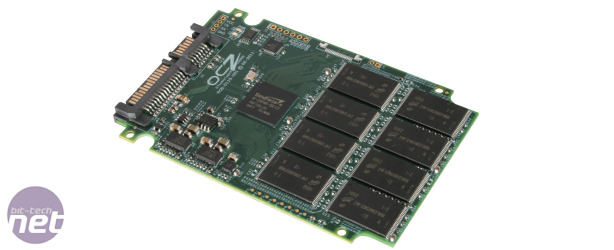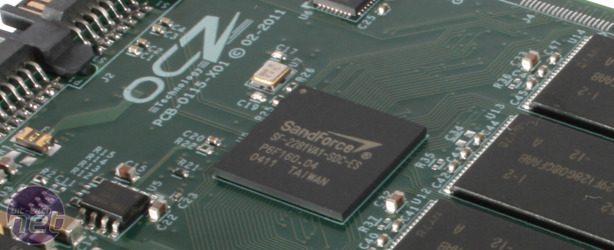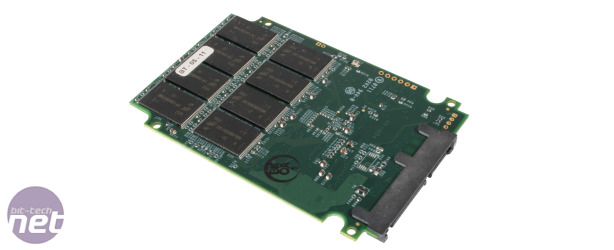
OCZ Vertex 3 SSD Preview
Manufacturer: OCZUK Price (as reviewed): 120GB around £200; 240GB around £400
US Price(as reviewed): 120GB around $250; 240GB around $500
While there's no question that an SSD can have one of the largest impacts of any upgrade in terms of how you use your PC, there have been relatively few new products hitting the market in the last nine months. Since the release of various manufacturers' SandForce-based drives and the excellent Marvell-powered Crucial C300-series last year, we've only heard rumours about next-gen SATA 6Gbps drives. While some of these drives were unveiled at CES, it still looked as though we were some way away from a new line of drives.
As such, we were pleasantly surprised to take delivery of a pre-production sample of OCZ's latest Vertex 3 consumer SSD; the first drive to sport the new updated SandForce 2000 drive controller, unveiled last October.
OCZ sent us the drive in an unbranded tin, so we've stripped it out for ogling purposes
For those who don't recall, SSDs based on SandForce controllers work a little differently from traditional SSDs. Rather than writing data 1:1 onto the drive, SandForce's DuraWrite technology is able to compress data on the fly, effectively writing less data than it tells the host controller about.
This method has lots of benefits, not least the reduction of writes to the SSD's NAND flash memory and the lack of a need for a separate DRAM cache. However, it also means that the drives performs differently when dealing with different kinds of data. With the first line of SandForce drives, we found that compressible data performance was stellar, but the speed was less appealing when dealing with incompressible data, such as media files that are already compressed.
The new SandForce SF2281 drive controller: made in Taiwan
The new SandForce SF-2281 controller used in the Vertex 3 takes the technology of the original SF-1200 line of controllers, and expands it in line with the SATA 6Gbps standard, with SandForce claiming outlandishly fast speeds of up to 550MB/sec for sequential reads and 525MB/sec for sequential writes. These will be the absolute best-case speeds, but they're still a huge step up from the 355MB/sec and 215MB/sec respective read and write speeds of the Crucial C300 256GB, which has been the fastest single-drive SSD on the market for the last nine months.
To accomplish this speed improvement, OCZ has implemented a number of improvements to the Vertex 3, not least the inclusion of support for the higher bandwidth ONFI (Open NAND Flash Interface) 2.1 memory and a SATA 6Gbps interface. The version we've been sent is the standard Vertex 3, rather than the Vertex 3 Pro previewed at Anandtech, and this means that it's fitted with Micron's new NAND flash memory too.
Micron 25nm NAND is present on both sides
Unlike the Vertex 3 Pro, the standard Vertex 3 is also signficantly less over-provisioned. Our 240GB model has 16 16GB NAND modules, making for a total of 256GB (274,877,906,944 bytes) of storage. However, the usable area is only 223.57GB (240,000,000,000 bytes), leaving 32.5GB (or 12.5 percent) of the drive spare. This spare area is used to check data parity, store the compression hashes and replace faulty blocks of NAND. It's certainly good to see no repeat of the mistakes made with the first lines of SandForce-based SSDs, which launched with enterprise-level provisions, resulting in a loss of usable area for early adopters.
Perhaps the most appealing feature of the Vertex 3, though, is its targeted price. Thanks to the use of 25nm NAND, OCZ appears to be approaching the market very aggressively, with an MSRP of $249.99 for the Vertex 3 120GB in the US. This could work out at around £200 once you've accounted for exchange rate conversion and tax, which would put the drive's price some way lower than those we've seen quoted for SATA 6Gbps 2nd-Gen Marvell based SSDs, such as Corsair’s Performance 3 or Crucial’s m4 line-ups. If the Vertex 3 really can deliver 500MB/sec reads at this price, then the competition will be running scared.

MSI MPG Velox 100R Chassis Review
October 14 2021 | 15:04











Want to comment? Please log in.